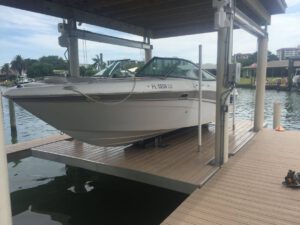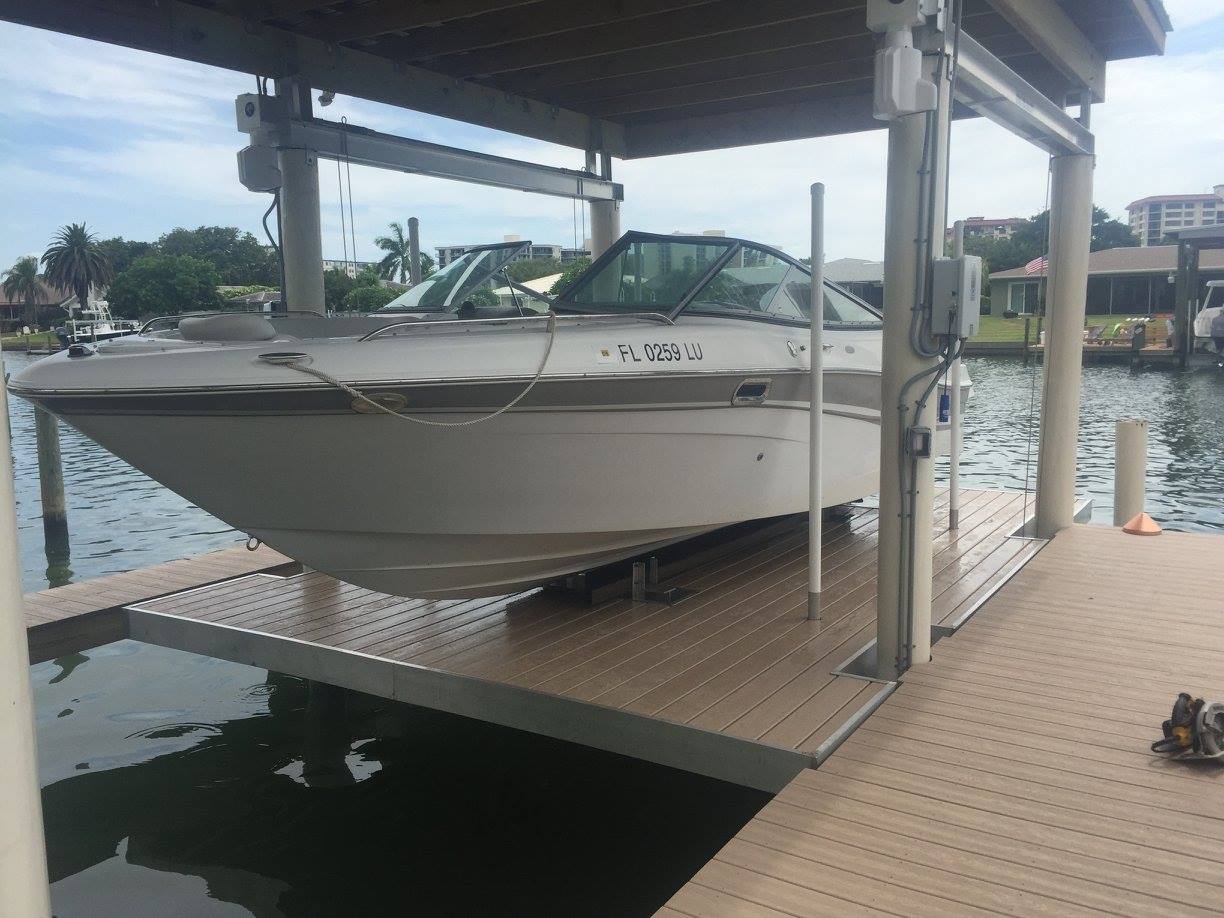A boat lift protects your investment by keeping your boat out of the water and safe from damage during severe weather. This reduces exposure to salt water which can cause corrosion on the hull and propellers.
Extreme stability and bracing are required in rough water locations, so look for a heavy-duty lift that can withstand the elements. Click https://dockbuildingcharleston.com/ to learn more.
The physical structure of your lift needs to be strong enough to support the weight of your vessel. It is important to consider your boat’s make, model, and dry weight, including all accessories like cover, fuel, props, and batteries. This information will help you determine the size of the best lift and cradle for your boat. It is also important to consider where the lift will be installed. Every body of water has calm and rough areas, and a strong lift that will be able to handle the conditions of your particular location will minimize wear and tear on the structure.
Most lifts are designed to carry a specific amount of weight. When you have an upgrade and increase the weight of your boat, it is critical to make sure that your lift structure can support the new load. If the lift can not support the increased weight, it will create stress on the cables and pulleys that could damage them.
To reduce the risk of damaging your lift, always monitor the speed at which you raise or lower your boat. Never over-raise the vessel as this can cause a variety of problems, from structural failure to creating damage to the hull or pontoons. To avoid this, find a lift that has a limit switch to prevent over-raising.
Another way to decrease the risk of over-raising is to use a cleat at each end of the boat when it is on the lift. This provides more support to the hull and helps to distribute the weight evenly across the dock.
Lastly, be sure to regularly lubricate your lift with penetrating oil or chain and cable fluid to reduce the friction between cable strands. This will help to extend the life of your lift. In addition, lubrication can reduce the frequency of necessary repairs and replacement parts. A well lubricated lift is easier and safer to operate.
Rough Water Locations
If you live in an area prone to rough water or storm surges, it’s important that your lift be designed to accommodate those conditions. Having a heavy-duty lift with high, solid arms that can withstand increased pressure and movement is the best way to protect your boat from damage caused by sudden changes in water levels.
A float system is another good option for rough water locations, as it rises and falls with the tide to provide consistent access regardless of the time of day. This type of lift is also an excellent choice if you are limited in the options for dock construction and cannot attach the lift to a fixed structure.
Another feature to consider when shopping for a boat lift is whether you need additional support to help secure your boat during storms. There are many different types of hull supports, including cradles, pontoon bunks, and full-length PVC guides, that can be used to make it safer to maneuver boats on and off of the lift.
Canopies are one of the most popular boat lift accessories, as they can provide extra protection from sun and weather when your boat is not in use. These covers can help to prevent blistering on the hull, as well as reduce dirt and algae buildup. Additionally, they can help to keep your boat looking new for years to come.
It is also important to consider the height of the expected storm surge when shopping for a boat lift. Leaving your boat on the lift during a hurricane can cause it to be damaged by the surge and the wind-blown debris that it is forced against. In addition, it can increase the force on the piles, which could lead to them breaking off of the seabed or collapsing the lift.
Having a boat lift is an essential accessory for any boat owner who wants to ensure the safety and longevity of their investment. There are a variety of options for every budget, from simple basic units to fully custom solutions. Taking the time to research and compare different manufacturers can help you find the best lift for your specific needs.
Calm Water Locations
A boat lift is not as much of a necessity in calm water locations. It is still beneficial for marinas that have a large number of small boats, which are more likely to experience damage from rough weather or debris in the water than larger vessels. In these instances, standard lifts may be sufficient if the dock is well built and the lifts are not being used to haul the largest vessels.
A marina with a boat lift system can save time, money and hassle by avoiding the need to haul a boat on and off land for cleaning and maintenance. This can help to preserve the quality of the boat and increase resale value down the road.
In addition, the use of a boat lift makes it easier to wash a boat and remove zebra mussels, algae and other types of marine growth. This helps to reduce the need for costly annual service, such as scrubbing and painting the bottom of a boat.
Another reason why a marina should invest in a boat lift is that it allows them to allow more boats in the water at one time. This will help to boost the resale value of the marina and improve overall customer satisfaction.
Marinas should carefully consider all environmental factors when considering installing a boat lift. This includes soil conditions, pile size, water depth and any fluctuations in water levels. In certain areas, the water level fluctuates significantly and may be too high or low to support a particular lift.
For these locations, a floating dock system would be a better option since it rises and falls with the water level. A floating dock system can also accommodate a variety of dock lifts that will work in the location.
As the popularity of boat lifts continues to grow, more marinas are beginning to incorporate them into their operations. While they can be more expensive than a traditional dock, it can be a cost-effective way to protect boats and provide convenience for customers. If your marina hasn’t already considered adding a boat lift, now is the perfect time to do it!
Water Depth
Depending on the type of lift you choose, there are different water depth requirements. The best way to determine the right depth for your boat lift is to check the manufacturer’s specifications. This should also include information about how to operate the equipment, such as using a control switch or up and down buttons. In addition, most lifts come with a wireless remote that makes operating your lift much easier and more convenient.
The optimum water level for your lift may depend on the location of your dock and the surrounding area. Fluctuating water levels can cause problems for your dock and lift, so it’s important to look for a model that is designed for the water level you typically have at your dock.
If your lift doesn’t have enough depth, it could bump into the bottom of your boat and cause damage. In addition, waves can hit your boat and batter it against the dock and other structures. With a lift, your boat is above the waterline and protected from these hazards.
Most bodies of water experience a fluctuation in water levels, especially during weather events such as storms or heavy rain. This can cause your boat to bump and rock in wet storage, leading to a build-up of layers of scum and algae that eventually corrode the vessel’s metal parts. With a lift, your boat is raised out of the water and protected from these conditions, so it stays in excellent condition.
Floating lifts are ideal for three- to nine-foot water depth situations. They are designed to allow boats to rest in a stable position while not in use, so they don’t require the same structural support as piling or leg models.
Some floating boat lifts are designed for specific types of boats, such as ski or wake boats, which need more clearance than other vessels. If you’re unsure which type of lift is best for your situation, consult the owner’s manual to learn about the maximum weight capacity and minimum water depth.
A hydraulic cantilever lift has a fixed main frame that attaches to the dock and a carriage the boat rests on. This lift has a faster operation than traditional cable-driven models, but it’s not suited for waters deeper than two feet.
